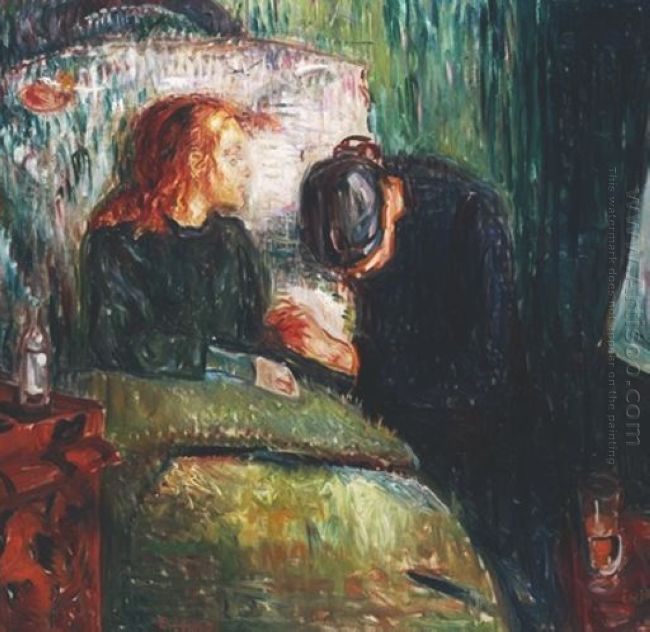Edvard Munch was born in a noble family in Lorton Norway. Munch’s father was a doctor and also a devout Christian. He often went to treat the poor with the very low income. Munch’s mother died when Munch was 5 years old because of lung disease. When he was 15 years old, his sister Sophia also died of lung disease. When Munch became an adult, his father and a brother died. This series of family misfortunes left a deep black scar to Munch’s heart. At the age of 16, Munch was ordered by his father to enter the technical school to study engineering. But he loved painting and often went to the countryside for sketch. Later he was encouraged by his aunt to enroll Oslo Art School and was taught by Norway artist Krueger. Munch was greatly influenced by him. In 1884, Munch got acquainted with Oslo modern school artists. In the following year, he won the national scholarship to study in France. When he arrived in Paris, Munch was attracted by the impressionist paintings and admired Manet. He took debauchery and deviant lifestyle to oppose the bourgeois morality and advocate free and enthusiastic pursuit of sex. Munch was influenced by the group and he once loved a woman who was 20 years older than him. The Sick Child which was made between 1885 and 1886 was a memory for his family suffering in his childhood.
The Sick Child by Edvard Munch depicted the scene when his 15-year-old sister Sophia suffered from the disease. The lung disease took her life and she was thin and pale. But we could see her childish temperament from her. This indelible impression deeply buried in the memory of Munch. The painting used the fierce and casual colors, like a draft. And the color tone of the painting was gloomy with the dense tragic atmosphere. When it was shown at the Norway national annual exhibition, it was attacked by conservatives. Munch had to change with the academic skills, and then drew a variant painting to rename Spring. And this painting won the national scholarship. In June 1889, he had to study in Paris. The Sick Child became the starting symbol of his personal style.
